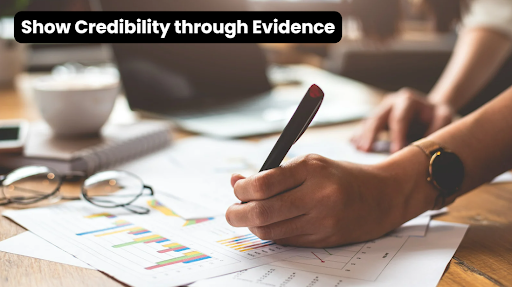To sign up for our daily email newsletter, CLICK HERE
Have you ever been wordless, knowing that your proposal may either make or break a golden opportunity? The pressure for something to be compelling yet professional might seem too much to bear. Whether one is competitive in a business deal, seeking funding, or pitching for a collaborative project, a proposal is often his only chance to sway decision-makers. How does he make it stand out, clearly communicate, and achieve his result?
Writing a proposal is not only about recording facts but rather about a story, establishing trust, and aligning your goals with the recipient’s needs. It requires a fine balance of creativity and precision, empathy and strategy. The secret techniques that make your proposal different from an ordinary one may be the difference between being selected or overlooked.
Understand Your Audience
A good proposal starts with knowing your audience. It makes no sense to write anything until you take the time to research who you’re addressing and what their goals, challenges, or values are. This way, tailoring your appeal directly to their needs is enabled.
An audience-centered approach ensures that your message resonates. Rather than telling people what you are offering, talk to them about how it benefits them. If the proposal is aligned with their priorities, they are more likely to find value in it. Your use of language and tone should reflect their culture and expectations, making it easier for them to connect with your message.
Launch Into Clarity with Purpose

A proposal’s opening is critical. With that, any business proposal writer must hook the reader immediately. A good, interesting, and very clear introduction often creates the tone and roadmap for the rest of the document. Clearly state the problem you’re addressing or the opportunity you’re seizing and outline how your proposal offers the solution.
Do not use ambiguous or overly wordy text. The idea is to make the reader believe that the time they spend reading will be worthwhile. Introducing a direct purpose at the beginning gives an impression of credibility and creates anticipation for what the message may contain.
Structure for Clarity and Flow
A well-organized proposal is easier to read and understand. Use a logical structure that guides the reader easily through your ideas. Break your content into sections with clear headings, and use bullet points or numbered lists to draw attention to salient details.
Each section should flow from the previous one to logically bring the reader naturally to your conclusion. This flow helps keep them engaged and ensures they can easily take away the key thoughts, even if they scan through.
Focus on Benefits, Not Features
While it is tempting to highlight all the impressive features of your proposal, in effect it matters little to the reader; what matters most is: how does your solution improve their situation or meet their needs? Focusing on outcomes rather than processes makes your proposal more persuasive.
For example, instead of saying, “Our software contains advanced analytics capabilities,” say, “Our software equips your team to make data-informed decisions faster and with greater accuracy.” This minor tweak speaks more to value creation and makes a stronger connection in the reader’s mind.
Show Credibility through Evidence

Proposals that are not supported by evidence can be misleading as empty promises. Create trust by confirming that your proposition is true using facts, data, and examples. Use case studies, testimonials, or statistics to prove that your solution works and delivers results.
Evidence will prove that you are indeed a professional in this field and will leave no doubt in the reader’s mind about your capabilities. It adds substance and depth to your proposal, hence making it more convincing. Where applicable, include visuals like charts or graphs to make your points clearer.
Use Persuasive and Concise Language
The language you use in your proposal matters. Keep sentences short and ideas clear. Wherever possible, you should avoid jargon and technical words unless they are familiar to your audience. Use clarity and simplicity.
Persuasion comes not from flowery language or excessive detail but from a clear, compelling narrative. Use active voice and positive phrasing to create a sense of self-esteem and action. Every word should serve a purpose; take it out if it doesn’t add value.
Anticipate Potential Objections Ahead

Anticipating and addressing objections shows that you’ve thought through your proposal thoroughly. Consider what questions or concerns the reader might have and provide answers within your content.
For instance, if cost is a potential issue, explain why your solution is a worthwhile investment. If implementation might seem complex, outline how you’ll support them through the process. Tackling objections upfront demonstrates empathy and preparation, boosting your proposal’s credibility.
Incorporate Visual Elements
Visual elements can make your proposal more engaging and easier to understand. Charts, infographics, and images help break up text and convey complex information quickly. They also add a professional touch, showing that you’ve put effort into presenting your ideas.
However, visuals should enhance your content, not distract from it. Use them strategically to support your key points. Ensure they’re high-quality and relevant to the proposal’s purpose.
End with a Strong Call to Action
The conclusion of your proposal is as important as the introduction. This is your chance to leave a lasting impression and guide the reader toward the next steps. Clearly state what you’re asking for and what action you’d like them to take.
Make it clear and actionable for a call to action. An example is the text: “We look forward to discussing this proposal further in a meeting next week. Please let us know your availability.” That clarity removes ambiguity and will most likely get a response.
Review and Refine
| Step |
Description |
| Review Content Carefully |
Check for errors, inconsistencies, and areas that need improvement. Make sure the proposal flows logically and clearly. |
| Maintain a Professional Tone |
Ensure the tone is consistent and appropriate for the audience. The proposal should align with the reader’s expectations of professionalism. |
| Seek Feedback |
Ask colleagues or mentors for their input. A fresh perspective can help identify blind spots or areas for enhancement. |
| Polish the Proposal |
Invest time in refining the content, ensuring that all details are correct and the presentation is well-organized. A well-polished proposal demonstrates excellence. |
Conclusion
Crafting a good proposal is both an art and science-it requires understanding the audience, presenting ideas clearly, building trust with evidence, and empathy. Every technique relates to creating a story that compels the reader.
Even though this process seems to be quite cumbersome, it is highly rewarding. A well-crafted proposal will generally open all doors for new opportunities, strengthen your professional relationships, and express your expertise. With these techniques in mind, you can approach proposal writing in a relaxed manner and greatly increase your chances of success.
FAQs
- Why is understanding the audience important in proposal writing?
Understanding your audience helps tailor the proposal to address their specific needs and priorities, making it more relevant and persuasive.
- How can I make my proposal more engaging?
Start with a strong purpose, focus on benefits instead of features, and use visuals like charts or infographics to break up text and clarify ideas.
- Why should I use evidence in my proposal?
Evidence, such as data or case studies, builds credibility and reassures the reader that your solution is reliable and effective.